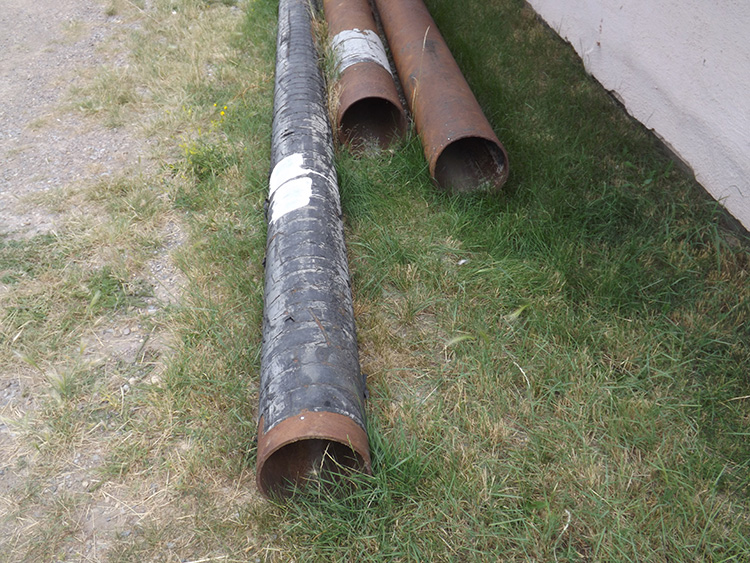This segment is meant to assist in the identification of pipe material which has been used in the utility industry in North America, roughly over the last 230 years or so. This can be a major issue today with the vastly growing number of vacuum test holes being dug, and the operator’s need to know “what kind of pipe material is that?”.
There are also a number of names often used for the same pipe material. One person may call it Bituminized Fiber, while another person may call it Orangeburg, yet both names refer to the exact same pipe material. Bituminized Fiber is the technical name, and Orangeburg was one of the common manufacturers of Bituminized Fiber pipe. All common names have been included here to help clear up some confusion on the topic.
There were cast iron water pipes placed in North America as far back as 1785, however, the oldest specifically identified pipe of any kind placed in the United States seems to have been a wooden water main placed in Philadelphia in 1803. The oldest know utility pipe in Canada appears to be a 10-inch cast iron water main placed in Montreal in 1816. This pipe was dug up and replaced in about 1952.
Only some of the pipe materials listed here are included in the AWWA pipe codes, only those that have been installed from the mid-20th century to the present. Some pipe materials were never included such as lead and wooden pipes.
Another point to be made here is that a single material can have differing appearances depending on its use. Steel is a very common material for an untold number of objects, but that does not mean that steel pipes look anything like household steel objects which are usually extremely smooth and shiny. Steel pipe is not all that smooth and it is not shiny. It is also either tightly wrapped or coated.
You can also see this difference with most poly pipes. ABS plastic is a common material for modern Pipe & Cable Locators, smooth, shiny, and available in numerous colors. But ABS pipe is thick, rough, black, and has the look and feel of hardened rubber.
The point is that the description of materials listed here is for their appearance when used as utility pipes only.


































